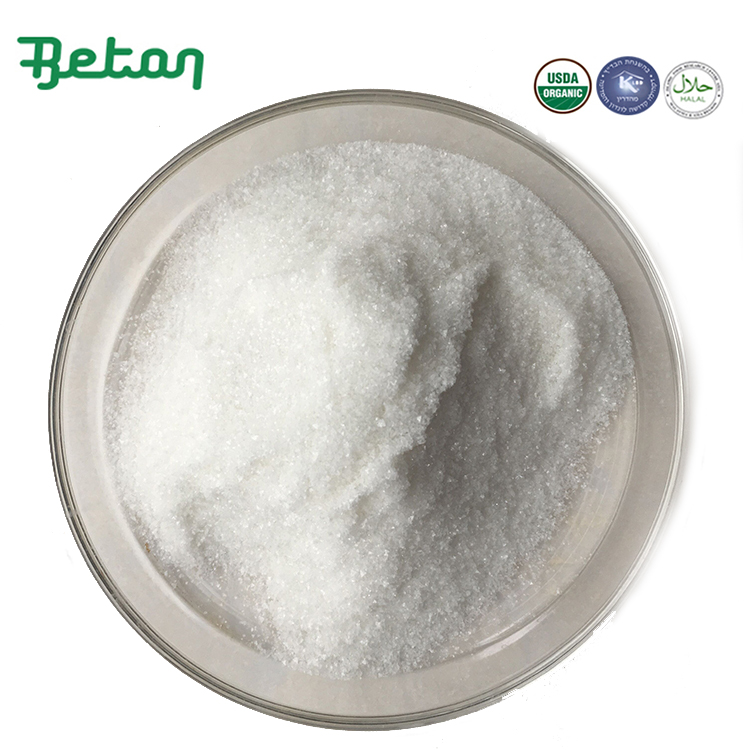-
Categories
-
Pharmaceutical Intermediates
-
Active Pharmaceutical Ingredients
-
Food Additives
- Industrial Coatings
- Agrochemicals
- Dyes and Pigments
- Surfactant
- Flavors and Fragrances
- Chemical Reagents
- Catalyst and Auxiliary
- Natural Products
- Inorganic Chemistry
-
Organic Chemistry
-
Biochemical Engineering
- Analytical Chemistry
- Cosmetic Ingredient
-
Pharmaceutical Intermediates
Promotion
ECHEMI Mall
Wholesale
Weekly Price
Exhibition
News
-
Trade Service
Zhong Kai
Speaking of hyaluronic acid, you will definitely think of medical beauty and celebrity plastic surgery, such as injection into the facial skin to remove wrinkles, injection into the breast or buttocks to shape and so on
.
In fact, the uses of hyaluronic acid are far more than these.
In clinical practice, it has been successfully used in the medical practice of ophthalmology, orthopedics, and burns.
It can also be directly added to food or dietary supplements abroad
.
.
In fact, the uses of hyaluronic acid are far more than these.
In clinical practice, it has been successfully used in the medical practice of ophthalmology, orthopedics, and burns.
It can also be directly added to food or dietary supplements abroad
.
In China, hyaluronic acid was approved as a health food as early as 2008
.
At the end of 2020, the National Health Commission approved hyaluronic acid as a "new food raw material" that can be added to dairy products, beverages, candy, chocolate, cold drinks and other foods
.
The edible domestic "hyaluronic acid food" is coming soon, are you excited?
.
At the end of 2020, the National Health Commission approved hyaluronic acid as a "new food raw material" that can be added to dairy products, beverages, candy, chocolate, cold drinks and other foods
.
The edible domestic "hyaluronic acid food" is coming soon, are you excited?
Hyaluronic acid, also called hyaluronic acid, is a kind of macromolecular polysaccharide first found in the eyes of cattle
.
It is an important part of the cell matrix, which is widely distributed in the human body and exerts a variety of physiological functions
.
The human body can synthesize hyaluronic acid, mainly by "fibroblasts".
It is estimated that there are about 15 grams of hyaluronic acid in an adult's body
.
.
It is an important part of the cell matrix, which is widely distributed in the human body and exerts a variety of physiological functions
.
The human body can synthesize hyaluronic acid, mainly by "fibroblasts".
It is estimated that there are about 15 grams of hyaluronic acid in an adult's body
.
Its main position is in the skin, joints, cartilage, eyes, connective tissue, etc.
These hyaluronic acid will be "replaced with the old" on a regular basis.
For example, the hyaluronic acid in the skin will replace about 20% every day.
It can be seen that the body's own hyaluronic acid synthesis is quite considerable
.
These hyaluronic acid will be "replaced with the old" on a regular basis.
For example, the hyaluronic acid in the skin will replace about 20% every day.
It can be seen that the body's own hyaluronic acid synthesis is quite considerable
.
In fact, animal food contains hyaluronic acid, the most common ones are connective tissue and eyes
.
Rooster comb has a high content of hyaluronic acid.
It is the most traditional hyaluronic acid extraction material.
Pharmaceutical companies still use this method to produce hyaluronic acid
.
But the most important way to produce hyaluronic acid is through genetically engineered microorganism fermentation, which is relatively cheap
.
.
Rooster comb has a high content of hyaluronic acid.
It is the most traditional hyaluronic acid extraction material.
Pharmaceutical companies still use this method to produce hyaluronic acid
.
But the most important way to produce hyaluronic acid is through genetically engineered microorganism fermentation, which is relatively cheap
.
According to industry survey data in 2018, China's production of hyaluronic acid raw materials accounts for about 90% of the world.
The top five suppliers are all in China (Shandong), so most of the hyaluronic acid products you buy from overseas use Chinese raw materials
.
Now the domestic approval of hyaluronic acid for food can be said to be "export to domestic sales"
.
The top five suppliers are all in China (Shandong), so most of the hyaluronic acid products you buy from overseas use Chinese raw materials
.
Now the domestic approval of hyaluronic acid for food can be said to be "export to domestic sales"
.
It is a good thing that the meat is rotten in the pot, but can eating these hyaluronic acid foods achieve the effects of beauty, skin care and joint protection? As the saying goes, "don't look at the advertisement to see the effect", whether eating hyaluronic acid food can play a role, scientific evidence is the key
.
The European Food Safety Agency specifically evaluated the health claims of consuming hyaluronic acid to "protect joints" and "skin moisturizing" in 2009 and 2012, and the final conclusions were "insufficient evidence"
.
In fact, this is easy to understand, because the hyaluronic acid that is eaten will be partially destroyed when passing through the digestive tract, and then the remnant will be defeated by the intestine.
.
The European Food Safety Agency specifically evaluated the health claims of consuming hyaluronic acid to "protect joints" and "skin moisturizing" in 2009 and 2012, and the final conclusions were "insufficient evidence"
.
In fact, this is easy to understand, because the hyaluronic acid that is eaten will be partially destroyed when passing through the digestive tract, and then the remnant will be defeated by the intestine.
The tract is absorbed into the blood for transport
.
But the hyaluronic acid that enters the blood degrades quickly, and it may not reach the face or joints as you expect
.
Studies have indeed found that oral administration of hyaluronic acid in mice can increase the content of hyaluronic acid in the skin, which has also become the basis for some businesses to promote
.
.
But the hyaluronic acid that enters the blood degrades quickly, and it may not reach the face or joints as you expect
.
Studies have indeed found that oral administration of hyaluronic acid in mice can increase the content of hyaluronic acid in the skin, which has also become the basis for some businesses to promote
.
However, the doses in these experiments are very large.
For example, an adult who weighs 60 kilograms eats 3.
6 grams per day for a month
.
Be aware that the dose approved by the National Health Commission is a maximum of 0.
2 grams per day
.
It is illegal to exceed this dose .
Therefore, hyaluronic acid food, like bird's nest and donkey-hide gelatin, is just a psychological comfort to consumers, and the most important thing is to promote consumption
.
For example, an adult who weighs 60 kilograms eats 3.
6 grams per day for a month
.
Be aware that the dose approved by the National Health Commission is a maximum of 0.
2 grams per day
.
It is illegal to exceed this dose .
Therefore, hyaluronic acid food, like bird's nest and donkey-hide gelatin, is just a psychological comfort to consumers, and the most important thing is to promote consumption
.







